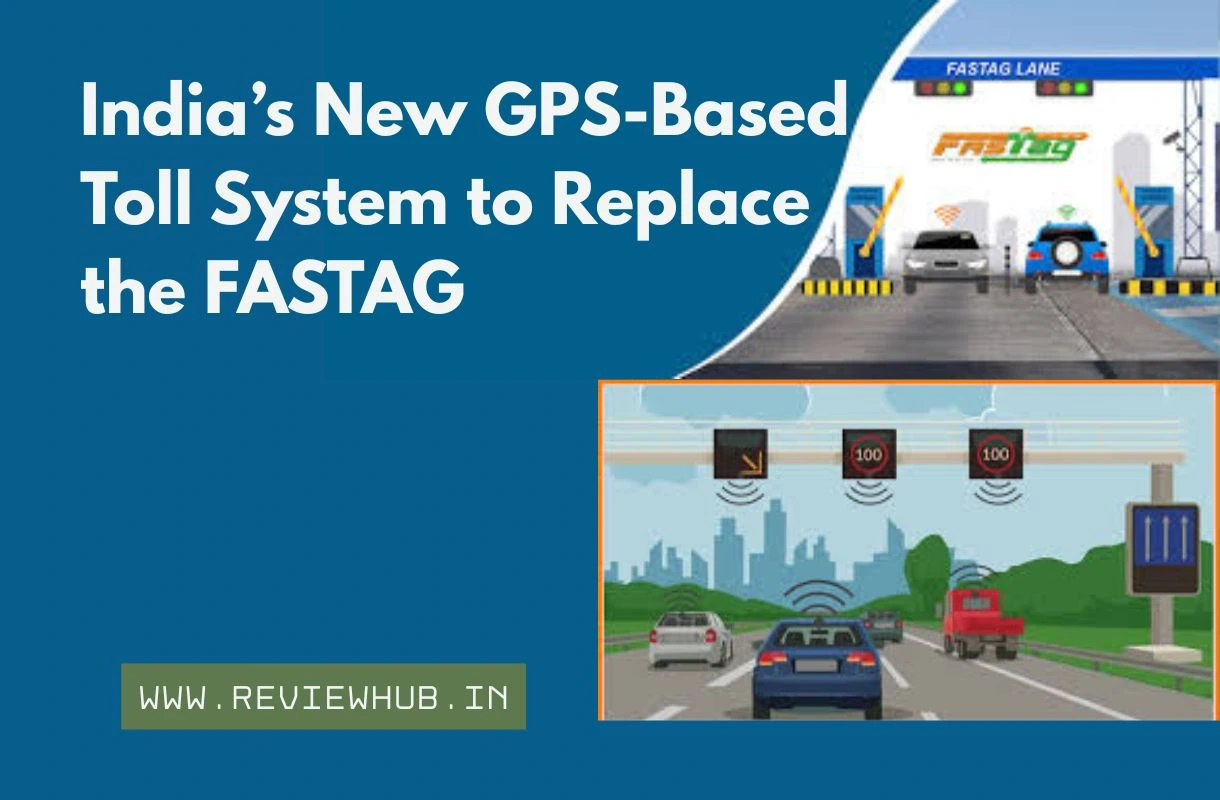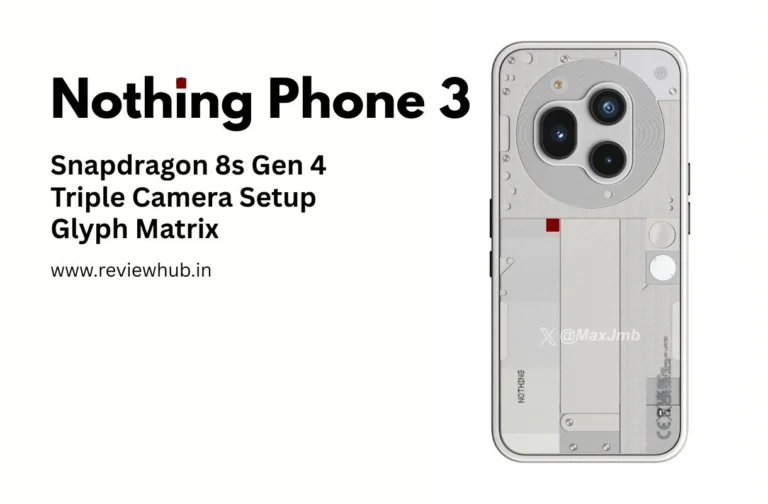India is on the cusp of a major transformation in its highway toll collection system. Starting May 1, 2025, the National Highways Authority of India (NHAI) plans to replace the widely used FASTag with an advanced GPS-based toll collection system. This move promises to revolutionize travel across the country, but it also raises questions about privacy, convenience, and implementation. At ReviewHub, we dive deep into how this shift will impact Indian travellers and what it means for the future of road travel in India.
- What Is the GPS-Based Toll System?
- How Will the GPS-Based Toll System Benefit Indian Travellers?
- Challenges and Concerns for Indian Audiences
- What Indian Travellers Can Expect During the Transition
- The Bigger Picture: India’s Digital Highway Future
- Should Indian Travellers Embrace the Change?
- Conclusion: A New Era for Indian Highways
What Is the GPS-Based Toll System?
The GPS-based toll system is a satellite-powered technology designed to streamline toll collection on India’s highways. Unlike FASTag, which relies on RFID tags and toll booths, this new system will track vehicles in real-time using GPS-enabled microcontrollers. Here’s how it works:
- Distance-Based Charges: You’ll only pay for the kilometers you travel on tolled highways, making it fairer than the flat fees charged at toll plazas.
- No Toll Booths: Real-time tracking eliminates the need to stop at toll booths, reducing congestion and saving time.
- Satellite Precision: The system may leverage India’s NavIC (Indian Regional Navigation Satellite System) or GPS for accurate tracking, ensuring precise toll calculations.
This futuristic approach aligns with global trends in digital infrastructure, but its impact on Indian audiences—drivers, commuters, and fleet operators—will be profound.
How Will the GPS-Based Toll System Benefit Indian Travellers?

The shift to a GPS-based system brings several advantages that could transform the travel experience for millions of Indians. Let’s explore the key benefits:
1. Time-Saving Convenience
Long queues at toll plazas are a common frustration for Indian drivers. The GPS-based system eliminates physical toll booths, allowing vehicles to move seamlessly across highways. Whether you’re a daily commuter or a long-distance traveller, this means faster journeys and less time stuck in traffic.
2. Fairer Toll Charges
Under FASTag, drivers pay a fixed toll regardless of the distance travelled on a highway stretch. The new system introduces a pay-per-kilometer model, ensuring you only pay for the distance you cover. This is a win for short-distance travellers who previously paid the same rate as those driving longer routes.
3. Reduced Fuel Consumption and Emissions
By minimizing stops at toll booths, the system reduces idling time, which in turn lowers fuel consumption and vehicle emissions. For environmentally conscious Indians, this aligns with the country’s push toward sustainability and cleaner air.
4. Enhanced Traffic Management
With real-time tracking, the NHAI can monitor traffic patterns and optimize highway management. This could lead to smoother traffic flow, fewer bottlenecks, and better road maintenance, critical for India’s rapidly growing road network.
Challenges and Concerns for Indian Audiences
While the GPS-based toll system holds immense promise, it’s not without challenges. Indian travellers have expressed concerns on social media platforms like X. Here’s a closer look at the potential hurdles:
1. Privacy Worries
The biggest concern among Indians is data privacy. As noted in comments on the X post, constant GPS tracking raises fears of government surveillance. Some users have also voiced worries about the system being a “violation of privacy” or a way for the government to monitor travel patterns.
The government has assured that only minimal location data will be collected for tolling purposes and won’t be shared without consent, as per a report from rajarshicollege.co.in. However, building trust will be crucial for widespread acceptance.
2. Transition Costs and FASTag Balances
For millions of FASTag users, the switch to a new system raises practical questions. As existing FASTag balances will need to be addressed, drivers may face costs to install GPS-enabled devices in their vehicles. The government has promised a smooth transition, but clarity on these details is still awaited.
3. Implementation Delays
A Hindustan Times report from March 2025 suggested that the rollout might be delayed until India’s NavIC system is fully operational. Unlike GPS, NavIC offers greater accuracy for Indian roads, but its partial functionality (with only five of 11 satellites fully operational) could push the timeline beyond May 2025. Indian drivers will need to stay patient as the infrastructure catches up.
4. Accessibility for Rural and Remote Areas
While the system will initially roll out on major highways, scaling it to rural and remote regions could be challenging. Ensuring that all vehicles, including older models, are equipped with GPS devices will require significant effort and investment.
What Indian Travellers Can Expect During the Transition
The shift from FASTag to GPS-based tolling will be gradual, starting with high-traffic corridors like the Delhi-Mumbai Expressway and Bengaluru-Chennai Expressway. Here’s what you can prepare for:
- Phase 1 Rollout: Major national highways will adopt the system first, with toll booths phased out over time.
- Retrofitting Vehicles: Drivers may need to install GPS microcontrollers, potentially at subsidized rates, to encourage adoption.
- Coexistence with FASTag: Initially, both systems might operate together to ease the transition for users.
- Public Awareness Campaigns: Expect government initiatives to educate drivers about the new system’s benefits and address privacy concerns.
For fleet operators and logistics companies, the system could lower operational costs by reducing delays and optimizing routes. However, they’ll need to ensure all vehicles are equipped with the necessary technology.
The Bigger Picture: India’s Digital Highway Future
India’s move to a GPS-based toll system is more than just a technological upgrade—it’s a step toward a futuristic, digital highway infrastructure. As ReviewHub has observed in our tech reviews, India is rapidly embracing innovations like 5G, smart cities, Sahkar Taxi, New Aadhaar app and now satellite-based tolling. This system could pave the way for other advancements, such as:
- Smart Traffic Systems: Real-time data could enable dynamic traffic management, reducing accidents and congestion.
- Crime Reduction: As noted in an ICICI Bank article, GPS tracking may deter vehicle-related crimes, enhancing safety on highways.
- Global Competitiveness: By adopting cutting-edge tolling technology, India positions itself as a leader in digital infrastructure among developing nations.
Should Indian Travellers Embrace the Change?
The GPS-based toll system has sparked both excitement and scepticism among Indian audiences. On one hand, it promises faster, fairer, and greener travel. On the other hand, privacy concerns and implementation challenges can’t be ignored.
At ReviewHub, we believe the system’s success will depend on how well the government addresses privacy fears and ensures a seamless transition. For now, Indian travellers should stay informed, prepare for the shift, and weigh the benefits against the challenges.
Conclusion: A New Era for Indian Highways
India’s GPS-based toll system, set to launch on May 1, 2025, marks a bold leap toward modernizing road travel. By eliminating toll booths, introducing distance-based charges, and leveraging satellite technology, it promises to make highways faster and fairer for millions of Indians. However, addressing privacy concerns and ensuring smooth implementation will be critical to winning public trust.
What do you think about this new toll system? Are you excited about faster travel, or worried about privacy? Share your thoughts in the comments below, and stay tuned to ReviewHub for the latest updates on tech and travel innovations shaping India’s future.
For more news about upcoming smartphones and popular products, and recommendations follow us on Facebook, Instagram, and Twitter.
Some of the links on our website are affiliate links. This means that if you click on these links and make a purchase, we may earn a small commission at no additional cost to you. These commissions help us maintain and improve our website, enabling us to keep delivering valuable content to you.




